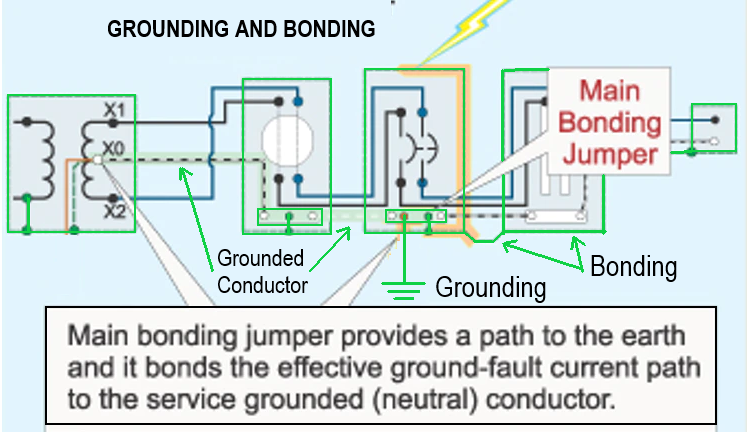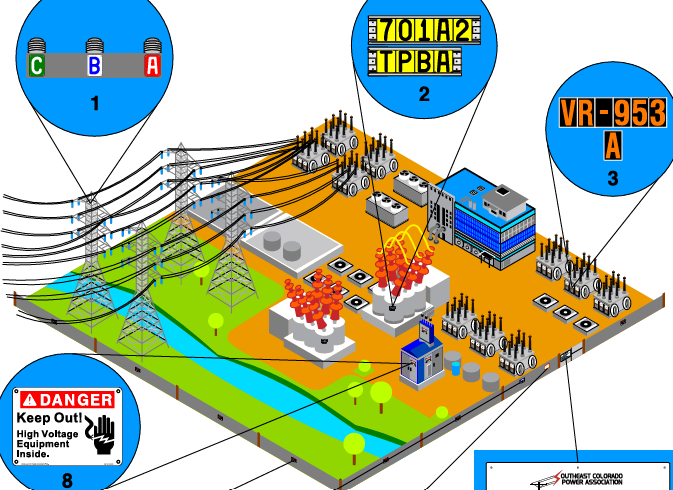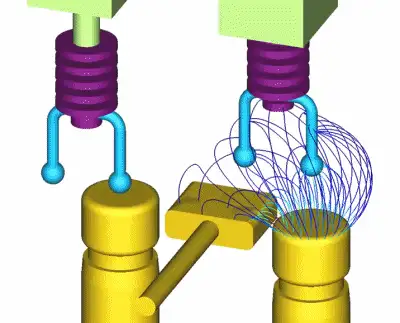Dangers of Electricity
By R.W. Hurst, Editor

NFPA 70e Training
Our customized live online or in‑person group training can be delivered to your staff at your location.

- Live Online
- 6 hours Instructor-led
- Group Training Available
Download Our OSHA FS3529 Fact Sheet – Lockout/Tagout Safety Procedures

- Learn how to disable machines and isolate energy sources safely
- Follow OSHA guidelines for developing energy control programs
- Protect workers with proper lockout devices and annual inspections
Dangers of Electricity include shock hazards, burns, fire risks, and arc flash incidents. Understanding electrical safety, including grounding, insulation, and proper equipment use, helps prevent accidents, reduce injuries, and ensure protection in homes, workplaces, and industrial environments.
What are the Dangers of Electricity?
The dangers of electricity refer to the risks of electrical energy causing harm through shock, burns, fire, or explosions, underscoring the importance of adhering to safety practices and wearing protective equipment.
✅ Includes hazards such as electrical shock and arc flash
✅ Emphasizes fire and burn risks from faulty wiring or overloads
✅ Promotes grounding, insulation, and compliance with safety standards
Dangers include a variety of hazards that include Electric Shock, Psychological Damage, Physical Burns, Neurological Damage and Ventricular fibrillation resulting in death.
Any form of energy, when not properly controlled or harnessed, can result in serious danger to those who use it. The risks inherent with electric power can generally be divided into two categories: direct and indirect. The direct danger is the damage that the power itself can do to the human body, such as the stoppage of breathing or regular heartbeats, or burns. The indirect dangers include the damage that can result to the human body as a result of an electric shock, such as a fall, an explosion, or a fire.
Electric power at any voltage can be dangerous and should always be approached with caution. An electric shock can occur upon contact of a human or animal body with any source of voltage high enough to cause sufficient current flow through the muscles or nerves. The minimum current a human can feel is approximately 1 milliampere (mA). As little as 80 milliampere can seize the heart muscle. The current may cause tissue damage or heart fibrillation if it is sufficiently high. A fatal electric shock is referred to as electrocution.
Sign Up for Electricity Forum’s Arc Flash Newsletter
Stay informed with our FREE Arc Flash Newsletter — get the latest news, breakthrough technologies, and expert insights, delivered straight to your inbox.

Electrical hazards can occur in many forms, from damaged electrical cords and improper use of an extension cord to overloaded electrical systems and faulty electrical equipment. Circuit breakers are designed to protect against such dangers, but OSHA electrical standards emphasize that safety depends on proper installation, inspection, and maintenance. Contact with overhead power lines remains a leading cause of personal injury and fatalities, which is why only a qualified electrician should perform high-risk tasks. To prevent electrical accidents, workers must follow safe practices, use protective equipment, and ensure that all systems meet compliance requirements.
Psychological Impact
The perception of electric shock can vary depending on several factors, including voltage, duration, current, path taken, and frequency. Current entering the hand has a threshold of perception of about 5 to 10 mA (milliampere) for DC and about 1 to 10 mA for AC at 60 Hz. Shock perception declines with increasing frequency, ultimately disappearing at frequencies above 15-20 kHz.
Prevention tips: Regular training helps workers understand perception thresholds and avoid underestimating risks.
Burns
Dangers include physical burns. High-voltage (>500 to 1000 V) shocks tend to cause internal burns due to the large amount of energy (which is proportional to the duration multiplied by the square of the voltage) available from the source. Damage due to current is through tissue heating. In some cases, 16 volts might be fatal to a human being when the electricity passes through organs such as the heart.
Prevention tips: Wear arc-rated PPE, maintain insulation integrity, and follow lockout/tagout procedures.

Ventricular fibrillation
A low-voltage (110 to 220 V), 50 or 60-Hz AC current travelling through the chest for a fraction of a second may induce ventricular fibrillation at currents as low as 60mA. With DC, a current of 300 to 500 mA is required. If the current has a direct pathway to the heart (e.g., via a cardiac catheter or other kind of electrode), a much lower current of less than 1 mA (AC or DC) can cause fibrillation. Fibrillations are usually lethal because all the heart muscle cells move independently. Above 200mA, muscle contractions are so strong that the heart muscles cannot move at all.
Prevention tips: Use residual-current devices (RCDs) or ground-fault circuit interrupters (GFCIs) to instantly shut off dangerous currents.
Neurological effects
Other Dangers cause interference with nervous control, especially over the heart and lungs. Repeated or severe electric shock, which does not lead to death, has been shown to cause neuropathy.
When the current path is through the head, it appears that, with sufficient current, loss of consciousness almost always occurs swiftly.
Prevention tips: Keep strict approach boundaries, use insulated platforms, and wear dielectric footwear.
Arc Flash And Blast
Arc flash and arc blast will always be present on the job, but proper awareness, training and the development of arc flash safety personal protection strategies can minimize the likelihood of injury and fatality.
The leading standard governing the calculation and determination of explosive hazard is the NFPA 70E - Electrical Safety in the Workplace. This electrical safety standard encompasses the full range of electrical safety issues, from work practices and maintenance to special equipment requirements and installation. In fact, OSHA in the United States already bases its electrical safety mandates on the comprehensive information in this important Standard.
Electrical safety is the leading subject in the North American power industry. Electrical accidents, when they occur (and they occur every day), are extremely debilitating and often fatal, depending on the voltage and amperage involved, as well as the conditions of electrocution. As little as 80 milliamps is enough energy to put the human heart into defibrillation and death. So, this subject should be addressed with a commitment from both electrical workers and their management.
FREE EF Electrical Training Catalog
Download our FREE Electrical Training Catalog and explore a full range of expert-led electrical training courses.

- Live online and in-person courses available
- Real-time instruction with Q&A from industry experts
- Flexible scheduling for your convenience
Prevention tips: Conduct arc flash studies, apply warning labels, wear appropriate PPE, and maintain safe working distances.
Workplace Safety and Prevention
-
Always treat electrical power as dangerous, regardless of voltage.
-
Follow NFPA 70E and OSHA regulations for training and protective measures.
-
Use grounding, bonding, insulation, and circuit protection devices.
-
Enforce lockout/tagout (LOTO) and maintain safe clearance boundaries.
-
Train workers regularly and refresh their awareness of safety procedures.
The dangers of electricity are real and varied, from shock and burns to arc flash explosions and fatal fibrillation. However, with proper grounding, insulation, protective equipment, and adherence to NFPA 70E and OSHA standards, these risks can be effectively mitigated. Electrical safety depends on knowledge, training, and consistent vigilance.
Related Articles







